MEET THE MAILERS
Meet the Mailers: Lifecycle Direct Mail Marketing
In this episode, we talked with Taylor Corporation about data analytics in direct mail and growing audiences with gift and loyalty cards.
In this episode, I talked with Rick Elliott, Data-Driven Marketing Expert of Taylor Corporation. Taylor delivers consumer retail marketing products, services, and technologies to its clients.
Rick discussed the role of direct mail throughout the different stages of lifecycle marketing.
We really use direct mail through that lifecycle and enhance it with other channels, like email, digital ads, SMS, social, but direct mail is still the high-end highest converting channel.
 Rick ElliottData-Driven Marketing Expert
Rick ElliottData-Driven Marketing Expert
Taylor Corporation
He also showed an example of a machine-inserted fabric sample from a campaign his company created.
Some of the other topics we covered:
- Rick’s background in print and direct mail
- Keeping costs under control
- Data analytics in direct mail
- Growing audiences with gift and loyalty cards
- Direct mail trends for 2022 and beyond
Here are some questions and answers (edited for clarity and space):
- Let’s talk about transactional mail. Why is transactional mail an important vertical for the company?
We’re one of the largest transactional mailers in the U.S. and we have about five facilities around the U.S. strategically placed – all secure facilities for this transactional mail. And just like anything, if you’re a financial institution and you need to send out a new credit card, new debit card, or a financial statement, that’s a follow-up direct mail piece, that direct mail was initiated from some action that you took, either becoming a client or something within that company.
That mail is important to finish the process or to communicate the next process in your journey of where you’re at. And then in addition to that, we’ve been able to figure out how to add email and SMS to that, to continue that conversation as that direct mail piece is coming. So very important core competency and having secure facilities that can process that PI information is key and really add bulk to mailing 2 billion pieces annually. We had to figure out how to do it smart, secure, and fast.
[D]igital is very crowded right now. You know that email could get lost. It could go to junk, you know, any kind of email or digital ads, they really are enhancing the direct mail piece and kind of getting you primed for it or ready for it.We find that people are still scanning your direct mail anywhere from five to seven seconds a piece, depending on what it is. So, doing digital, although good, it really just enhances direct mail and direct mail is really the key.
[Y]ou can get an email and you just aren’t sure “is it from my institution?”. You know, a lot of them got a lot smarter with how they change, where the “from” and so on.Direct mail, you get it, usually it’s invoking you to go directly to the company’s website, if there’s any action to take and versus having you click through something or touch something, it is still a very secure way to kind of conduct that transactional secure business.
Just even getting into some of these facilities that we have where you have to be screened, there’s secure areas, just the handling of that PI information, handling of that direct mail is extremely secure. Especially when we’ve entered that partnership with a client and passing that information back and forth, so, still very secure.
- Well, another area with big implications for high-target audiences is lifecycle marketing. What is that exactly and why is [it] an important strategy?
So really for us, we think about in that kind of front end, that prospecting phase or that education phase really, making someone aware of the brand – that the brand exists. We use the direct mail enhanced with email and digital ads to kind of make them aware. You can’t expect someone to immediately reply to that message. It’s more brand awareness. And as they go down funnel and hopefully that next time they think of, they need that product where they start becoming and market, they show that intent.
So now they’ve raised their hand and say, “Hey, I’m actually interested. I’ve seen the brand before from some other way you’ve communicated”. And then you start providing that relevant information.
Maybe they moved. So you can see that they’ve moved, now they’re in the intent lifecycle. So you’re providing that direct mail piece to them saying, “Hey, welcome to the neighborhood. We know you moved, you may need new furniture”, if that’s what you’re trying to sell.
So you kind of start getting them through there. And ultimately, maybe they end up on your website, maybe they end up on a competitor’s website, but that’s a pretty hard intent that says “I’m ready to buy”, “I’m looking” and you can communicate to them from those actions. And then ultimately they buy, they become a client, and then you can communicate to them. “Hey, how do you like the product, please go on Google and share your experience. Give us a five-star rating. Tell your friends, come back for more”.
So, we really use direct mail through that lifecycle and enhance it with other channels, like email, digital ads, SMS, social, but direct mail is still the high-end highest converting channel. Everything else just enhances that.
Triggered intent data enhances direct mail. You know, we kind of talk about traditional direct mail and if you’re just kind of a spray-and-pray, you’re communicating to everyone. Well, does that person meet your ideal client profile? Are they in-market?
These are signals that we use to enhance and say, instead of sending mail out to a million people, let’s send it out to the 50,000 that looked like the individuals that want to buy and also have that trigger and make them say, “Hey, you’re providing something to me that I want. I just moved. I’m going to need new furniture.”
Well, I can see that. And I can hyper-focus that direct mail and then personalize that direct mail. I know a lot of things about that individual and I can then communicate to them more in a personal way.
- So how about card programs? How can marketers grow audience by recognizing special events and occasions in their audiences’ lives with direct mail?
Great question. So, something that I might not have mentioned is that Taylor is one of the leading manufacturers of gift and loyalty cards.
The amount of volume is incredible that we produce on those. We do highly personalized cards, so we might use your name on the card, which is pretty incredible that we can produce those cards at that level, in that personalization. So we call them tip-on cards where let’s say a gas station is opening a new location.
They want to get people out there and say “Come to the gas station!”. Of course, they might not be discounting gas (we all hope that it would be, especially now), but what they can do is they can say, “Hey, come on out and get a free beverage, a free smoothie, a free Icee”. And that card – that tip-on-card can say, “Paul’s Free Icee” or “Rick’s Free Icee”, and any other information that we want to put in. That card is tangible, you can hold the card, you can touch the card, you put the card in your wallet, you put it in your car. It’s still a very viable way to kind of invoke that tangible asset and that action of actually showing up at the gas station.
So tip-on-cards, any kind of loyalty or referral around a special event is really still striking to note in direct mail.
- What kinds of data analytics and processing are needed for today’s marketers to be effective?
I fully believe in … smart direct mail. So you’ve got to serve direct mail to someone when it’s timely, when it’s relevant.
We kind of talk about, with our data and our analytics program with clients that are doing direct mail now where you and I get something in the mail and we’re like, “Why did I get this? I’m not in that age group. I’m not in this point in my life. I don’t have kids yet. Why am I getting advertised for kids products?”
So we talk about that in using a highly targeted data-driven mail where maybe we know that you’ve recently moved, you’ve recently had a child, you are online looking for camping gear and you know, I want to provide you… I sell camping tents and I want to tell you why my tent is special, why you should be aware of my tent and really, I’m looking for that right now.
I say, “Oh, wow, look at this tent and an offer as a new client to buy the tent”. So really this fundamental, when we think of direct mail, before it was “pick an area” because someone’s in Colorado, they’re going to want a tent. Well, that doesn’t mean they want a tent. Maybe they live in Colorado and they like the scenery, but they hate camping.
Why are you spending money on them? Versus I want to find everyone in the U.S. that loves camping and wants to buy that tent. So we really talk about that data, enhancing your direct mail and spending it wisely.
- We know that postage and paper costs put pressure on marketers to save money on mail. What are some good ways for marketers to keep costs under control?
You get catalogs in the mail, they’re thick, they cost a lot to mail, they’re not environmentally-friendly. Where do all these catalogs go when everyone’s done looking at them? They go in the trash, right? So, you know, from a company that’s sending out catalogs and you know, right now with paper shortages, with postage going up soon…how did you still invoke the catalog experience where you’re giving a spread of all of your products coming right to your mailbox without sending a catalog?
That’s hard. Postcards may not be able to convey that. So a smart way to help reduce costs, and still be able to get paper for that is doing a large self-mailer. So kind of saying, “Hey, we still can capture a lot of real estate using a large self-mailer that folds down a bunch of times”. And then on each page of that, maybe you’re putting a QR code that then takes you to the catalog online when you get the full spread of that item.
So we’re having those conversations with our clients and even new clients when they’re coming to us saying, “Hey, I’ve gone to so-and-so to get my catalog direct mail done quarterly and they can’t get the paper or it costs too much” or “the postage went up, what can I do differently? Can you mail the catalogs?”.
We can do catalogs, but you know, we’re also seeing the paper shortage. So let’s have this conversation about “What does your catalog look like? How can we give you a similar or better product that performs and then add data analytics to narrow down who you’re getting that catalog to?”
Maybe that person that you sent it to is just not your idea of a client any more. They’re not going to buy in the future. Something’s changed. So let’s not send it to them. So those are conversations that we’re having to help look at reducing costs because of paper, because of postage, and do it smarter, target less, but target them with a laser.
Here is our conversation. We’ve added timecodes for your convenience.
Thanks again, Rick, for an interesting and informative chat! To learn more about Taylor Corporation, visit Taylor.com.
Your comments and ideas are very important to us in making your Who’s Mailing What! experience even better for you. Through these engaging and informative talks, we hope you’ll take away practical tips, insights, and stories to inspire and build your own success.
If you have any feedback — or are interested in sharing your expertise and viewpoint with our wide and diverse audience — please reach out to me. I’d love to hear from you!









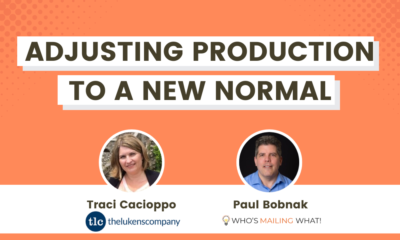
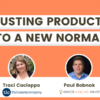
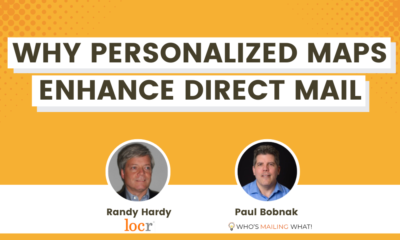



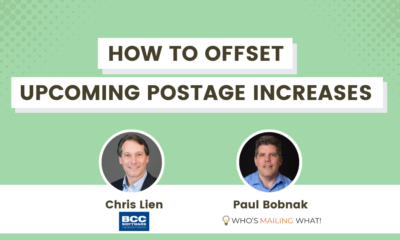
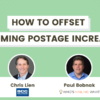
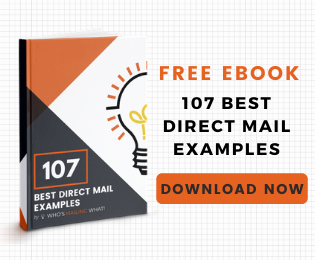
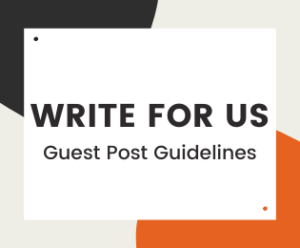
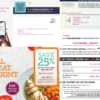
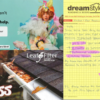
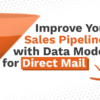
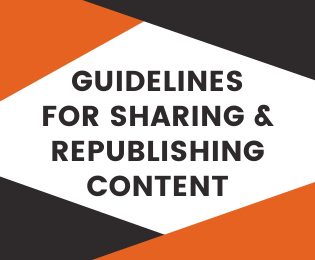
Ryan
June 2, 2022 at 8:23 pm
Good stuff guys… The machine insertion stuff is really cool.